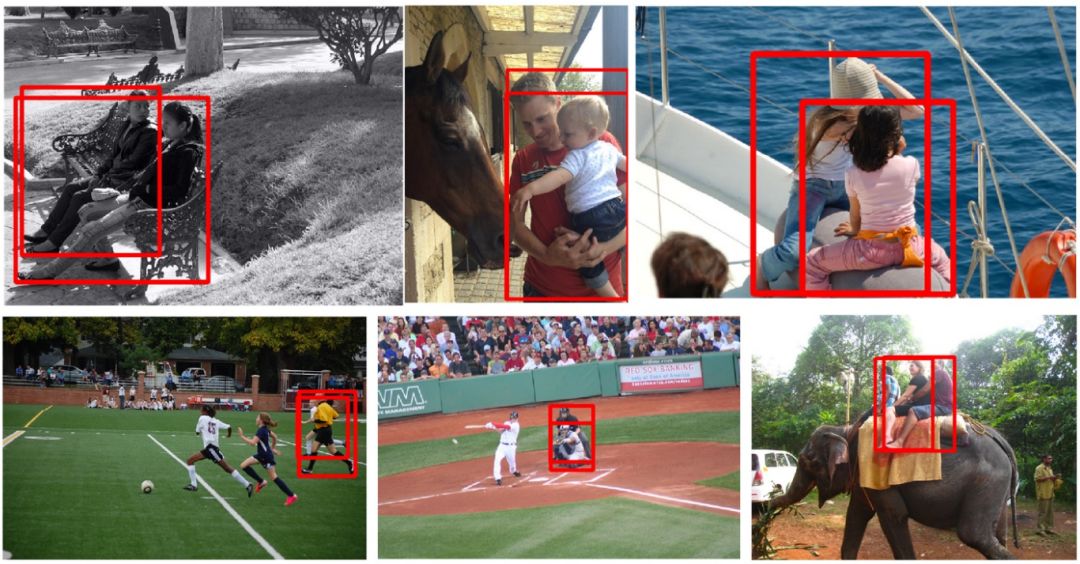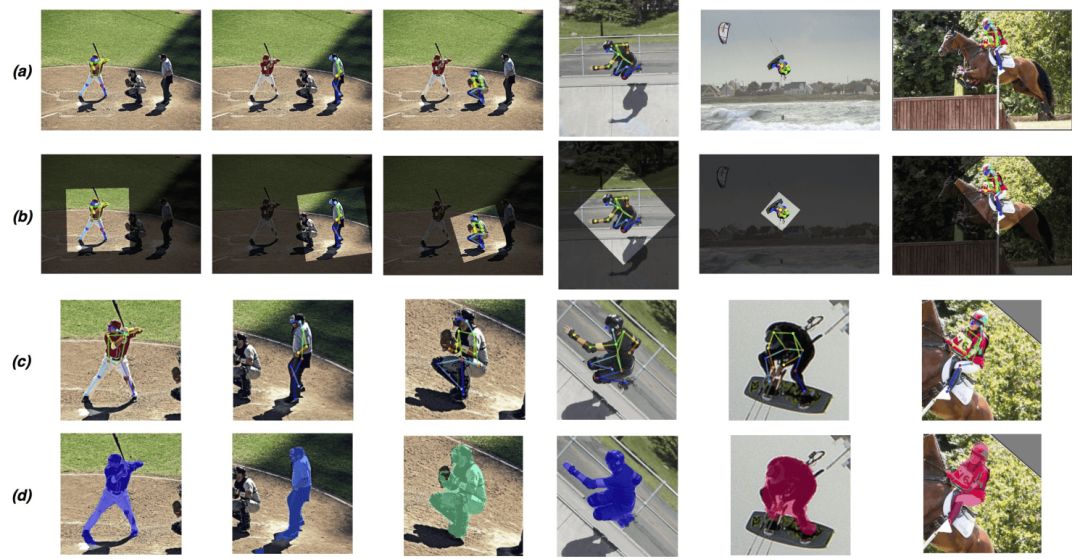For image segmentation, the traditional method is to detect the object in the image and perform the separation. In this article, researchers from Tsinghua University, Tencent's AI Research Institute, and Cardiff University in the United Kingdom have proposed a new method of segmenting people in images based on their identification. The following is the compilation of the original wisdom on the original text.

The general method of image segmentation is to detect the object first, and then use the bounding box to divide the object in the painting. Recently, deep learning methods such as Mask R-CNN have also been used for image segmentation tasks, but most studies do not pay attention to the specificity of humans: they can be identified through physical postures. In this paper, we propose a new method for image segmentation by different actions made by people.
The purpose of multi-person gesture recognition is to distinguish the movements of each character in the image. These need to be judged by body parts, such as the head, shoulders, hands, feet and so on. The general object segmentation example is intended to predict the pixel-level label of each object in the image. To solve these two problems, it is necessary to detect the target objects and separate them. This process is often referred to as target detection. However, since two-dimensional images contain less information, it is very difficult to separate two overlapping images of the same type. For target detection, there are many powerful benchmark systems, such as Fast/Faster R-CNN, YOLO, which all follow a basic rule: Mr. Cheng made a large number of proposed regions, and then removed non-repetitive regions with non-maximal suppression. However, when two objects of the same category overlap, the NMS always treats one of them as a duplicate proposal region and then deletes it. This shows that almost all target detections cannot deal with the problem of large area overlap.
Although this framework has been chosen for many multi-person pose recognition tasks, some bottom-up methods that do not depend on target detection have also achieved good performance. The main idea of ​​the Bottom-up method is to first find several key points on the body of all people. As shown in Figure 1:

figure 1
This method has several advantages. First, the operating cost does not increase with the number of people in the image. Second, the two overlapping characters can be separated when the body part is connected. As shown in FIG. 2, the human body posture is used. Can improve the problem of object overlap in object detection.

figure 2
The new method Pose2Seg
Based on human posture recognition, we propose an end-to-end object segmentation framework. The overall framework is shown in Figure 3, which takes the picture and gesture recognition results as input:

image 3
Then we use an alignment module to align the region of interest (ROI) to a uniform size (64 x 64) based on the human pose detection results (called Affine Align). At the same time, we generate skeleton features for each character in the graph and connect them to the ROI. The final experiment shows that adding bone information explicitly to the network can provide better information in image segmentation.
AffineAlign
The variety and variety of human actions make it difficult to perform image segmentation. Based on ROIAlign in Faster R-CNN and Mask R-CNN, we propose the AffineAlign operation. But unlike them, we are based on the alignment of the characters' actions rather than the bounding box. Through the information implied by human actions, the AffineAlign operation can straighten strange human actions and then separate overlapping people. The specific process can be seen in Figure 4:

Figure 4
At the same time, we also studied the characteristics of the human skeleton. We use partial affinity field (PAF) to reproduce the skeletal structure of an action. PAF is a two-channel vector field mapping. If there are 11 bone markers in the COCO data set, PAF is a feature map with 22 channels.

experiment procedure
We chose the COCO dataset, which is the most publicly available dataset for human images. We have divided it into COCOHUMAN and COCOHUMAN-OC datasets. The former is a human dataset with medium and large target objects, and The actions are annotated; the latter is an image with more overlapping objects and a total of 44 images. Some examples of COCOHUMAN-OC are shown in the figure:

The first is on COCOHUMAN, the method proposed in this paper is compared with Mask R-CNN:


Other AffineAlign operations, where a represents the input image, b represents the target on the original image, c represents the result of the AffineAlign operation, and d represents the segmentation result
Then the experimental comparison on COCOHUMAN-OC:

Our method and Mask R-CNN perform on overlapping images. The bounding box in our method is generated using a predictive mask that better visualizes and contrasts

The above table shows that our proposed gesture-based framework performs better than the image-based detection framework. Due to non-maximal suppression, some detection-based frameworks, such as Mask R-CNN, cannot handle large area overlaps. Even if the target object can be separated, part of it cannot be counted. But under this new framework, we have achieved the result that the entire body is separated.
A solar panel, or photo-voltaic (PV) module, is an assembly of photo-voltaic cells mounted in a framework for installation.
Solar panels use sunlight as a source of energy to generate direct current electricity. A collection of PV modules is called a PV panel, and a system of PV panels is called an array. Arrays of a photovoltaic system supply solar electricity to electrical equipment.
The main two types of solar panels. Each type of solar cells is made in a unique way and has a different aesthetic appearance.
1. Mono crystalline solar panel
2. Poly crystalline solar panel
Solar Panels For Home,Portable Solar Panels,Small Solar Panels,Transparent Solar Panels
NANTONG RONGCHANG IMPORT&EXPORT CO.,LTD , https://www.ergsolarcn.com
